Welcome to the Tyndall Air Force Base (AFB) Performance Standards overview created for future architects and engineers who are designing the Installation of the Future. These performance standards contribute to Tyndall AFB’s mission readiness and to the base being sustainable, resilient, and SMART-ready.
BACKGROUND
Welcome to the Tyndall Air Force Base (AFB) Performance Standards overview created for future architects and engineers who are designing the Installation of the Future. These performance standards contribute to Tyndall AFB’s mission readiness and to the base being sustainable, resilient, and SMART-ready. In 2010, the U.S. Department of Defense (DOD) identified climate change as a threat to its operations and installations. In March 2020, the U.S. Government Accountability Office, working on a review of DOD installations in coordination with surrounding communities on infrastructure resilience to climate change and extreme weather, surveyed 65 installations, including Tyndall AFB. The topics covered include the extent to which:
- An installations depends on the infrastructure of surrounding communities to support operational missions and any non-mission-related activities or services that support carrying out missions, the disruption of which could affect an installation’s ability to meet its mission.
- Installation officials are cognizant of the potential effects of climate change and extreme weather on surrounding community infrastructure.
- Relevant officials have identified operational mission vulnerabilities that could arise from the effects of climate change and extreme weather on installation and local infrastructure.
- An Installation has have worked with surrounding communities or other non-DOD entities to reduce vulnerabilities resulting from the effects of climate change and extreme weather.
Tyndall AFB is located on the coast of the Gulf of Mexico and is at high risk for damage from tropical storms and extreme weather events. The Air Force and the U.S. Army Corps of Engineers (USACE) support coastal storm risk reduction measures that increase resilience against the effects of coastal storms, such as avoiding or decreasing exposure, adding redundancy, or increasing robustness in design and construction. Since socioeconomic and ecosystem-based resources are critical to the nation’s economy and security, managing risks for continued productivity is intrinsically a federal responsibility, necessitating a collaborative, holistic government strategy (USACE, Civil Works Directorate, “Coastal Risk Reduction and Resilience: Using the Full Array of Measures,” August 2013).
INTRODUCTION
Sustainability, resilience, and being SMART-ready form the basis of design for the Installation of the Future. A sustainable base balances social, environmental, and economic impacts. A resilient base thrives, survives, and bounces back quickly from sudden shocks and stresses in a matter of days and weeks, not months and years.

Resiliency

Sustainability

SMART Systems
The Design Wind Speed and Building Envelope Protection Memorandum (27 Aug 2019) and the Design Flood Elevation Memorandum (5 Jun 2019) issued by the U.S. Air Force (HQ USAF/A4C) sets standards for how Tyndall AFB’s built environment will protect itself from natural vulnerabilities, such as extreme weather. Design wind speed and building envelope protection are two of the most impactful performance standards associated with the Tyndall AFB rebuild.
The Report on Effects of a Changing Climate to the Department of Defense notes:
The Department considers resilience in the installation planning and basing processes to include impacts on built and natural infrastructure. This includes consideration of environmental vulnerabilities in installation master planning, management of natural resources, design and construction standards, utility systems/service, and emergency management operations.
– Office of the Under Secretary of Defense for Acquisition and Sustainment, January 2019, as required by Section 335 of the National Defense Authorization Act
Installation of the Future performance standard goals include reduced operating costs, optimized installation operations, and mission assurance through operational stability, a healthy work, home, and recreational environment, higher energy performance, enhanced safety, and extended facility life.
The following are not all encompassing but do highlight the most impactful performance standards adopted by the Air Force that exceed Unified Facilities Criteria (UFC). These standards summarize material requirements for new construction and Facility Renovation, Sustainment and Modernization (FSRM) projects.
Performance Standard Justification
Design Wind Speeds
Design Wind Speeds and Building Envelope Protection Memorandum: Defines design wind speeds based on Risk Categories III-V
- Risk Category III – 165 miles per hour (mph)
- Risk Category IV – 170 mph
- Risk Category V – 203 mph
Design Flood Elevation
Design Flood Elevation (DFE) Memorandum: Defines the minimum elevation to design assets considering not only the Base Flood Elevation but also other factors.
- For the Gulf side the DFE is 19 feet above today’s Mean Sea Level
- For the East Bay side, the DFE is 14 feet above today’s Mean Sea Level
Where You Can Find Performance Standards Applied
- DD Form 1391 and associated Requirements Documents (RDs): Construction means and methods for resiliency factors, such as those in the following table, are identified and budgeted.
- Tyndall AFB’s Installation Facilities Standards (IFS): The IFS provides standard Air Force corporate facility design guidance. The Tyndall Rebuild Design Intent and Landscape Master Plan is located in the IFS Appendix G, under the Whole Building Design Guide, Tyndall IFS, www.wbdg.org. These documents give architects and engineers Tyndall AFB‑specific design guidance to define the base’s Architectural Image and Character guardrails. Materials and color palettes, site furnishings, signage, and lighting criteria are located in the IFS, and they are the foundation for all future design work at the base.
- The Tyndall AFB Integrated Natural Resources Management Plan (INRMP) is a planning document that outlines how Tyndall AFB will manage its natural resources ensuring continued access to the land and airspace required for mission readiness while sustaining ecological integrity.
- Construction Zone 35% Ready to Advertise (RTA) Request for Proposal (RFP) Packages: Construction packages associated with the rebuild effort were developed for 12 distinct zones and were defined by similar mission, geographic area, or type of infrastructure.
- Coastal Resiliency Other Transactional Authority (OTA) Case Study: A collaborative study with key federal, state, and non-governmental organizations assessing ways the ecosystem-based resources at Tyndall AFB will be positioned for reduced risk and resilience against the next extreme weather event.
- Other: Other sources as cited.
Performance Standards Adopted
Structural Load-Resisting Systems and Related Envelope Elements

| PERFORMANCE STANDARD | SOURCE |
|---|---|
| Apply the 2019 UFC 3-301-01 design wind speeds based on Risk Categories III-IV and apply additional design guidance on opening protection and exterior envelope materials by integrating best practices from the Florida Building Code High-Velocity Hurricane Zone. |
Design Wind Speed and Building Envelope Protection Memorandum issued by HQ USAF/A4C (27 Aug 2019) Installation Facilities Standards Const. Zone 35% RTA RFP Packages |
| Exterior architectural envelope elements are impact-resistant and meet Miami-Dade County Product Approval Notice of Acceptance provisions to reduce risk of envelope failure and building loss. | |
| Exterior site furnishings and light poles are designed to withstand a 170-mph wind speed. |
Architectural Systems

| PERFORMANCE STANDARD | SOURCE |
|---|---|
| Incorporate Tyndall AFB’s new architecture, image, and character base-wide. Create a cohesive, complementary array of facilities that reflect an image consistent with the history and regional character of the base. Apply design elements that not only are decorative but functional, such as roof awnings, canopies, and overhangs that are proactively built into designs which provide protection from weather for three or more people at a time. |
Installation Facilities Standards Const. Zone 35% RTA RFP Packages |
Energy, Power, and Electrical Distribution System
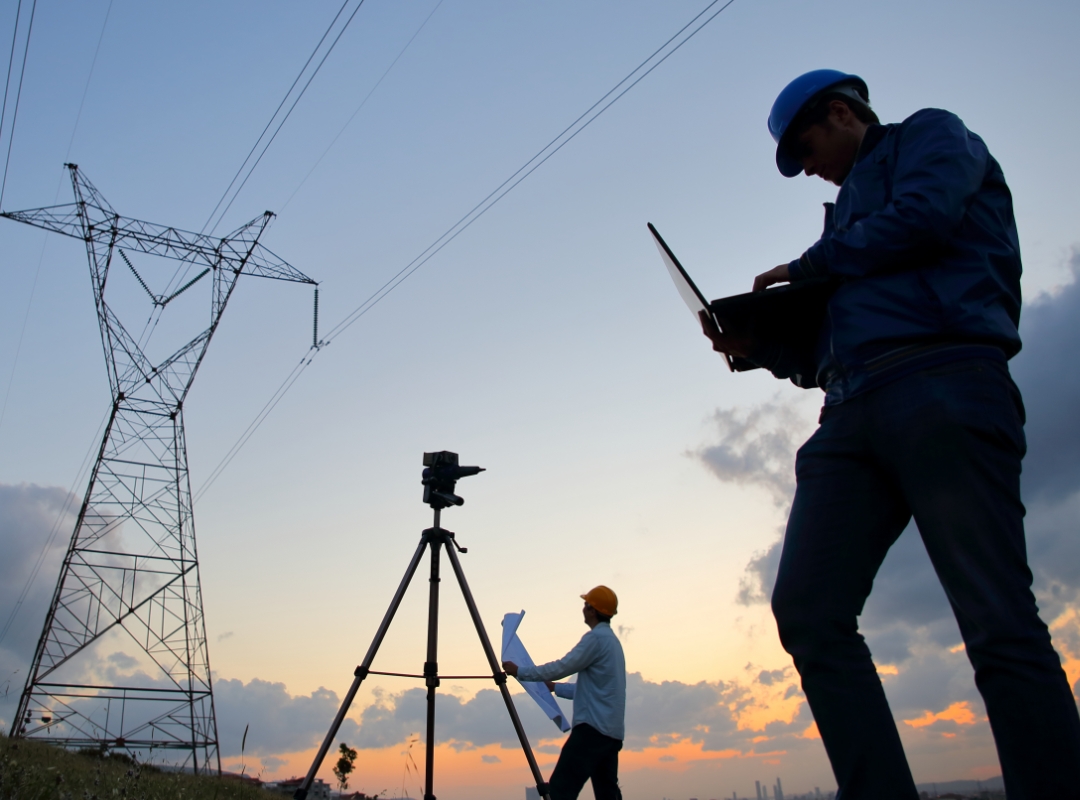
| PERFORMANCE STANDARD | SOURCE |
|---|---|
| Install Utility Operations Center and supervisory control and data acquisition (SCADA) to monitor and control the distribution system and minimize disruptions. | DD Form 1391/RD Const. Zone 35% RTA RFP Packages |
| Place primary utility distribution system underground. | DD Form 1391/RD Const. Zone 35% RTA RFP Packages |
| Install motor-operated distribution switching to minimize disruptions. | DD Form 1391/RD Const. Zone 35% RTA RFP Packages |
| Install electric distribution switchyard to reconfigure distribution feeders. | DD Form 1391/RD Const. Zone 35% RTA RFP Packages |
| Install backup generators at all mission critical and critical mission buildings. | DD Form 1391/RD Const. Zone 35% RTA RFP Packages 325th Fighter Wing Civil Engineer Contingency Response Plan (CRP) (01 June 2016) |
| Provide additional fuel storage for backup diesel generators. | DD Form 1391/RD Const. Zone 35% RTA RFP Packages |
Exterior Lighting
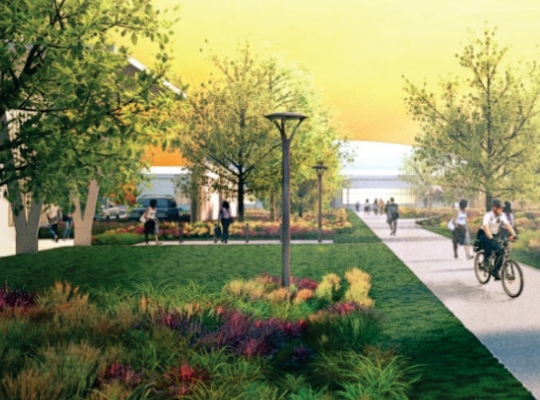
| PERFORMANCE STANDARD | SOURCE |
|---|---|
Install a permanent lighting solution that reduces the effects of nighttime lighting on federally protected coastal species, such as beach mice, shorebirds, and sea turtles, during their nesting season from 15 May through 31 October. Solutions will include new “Sea Turtle Friendly” lighting or modifications to existing lighting, such as replacing or modifying bulbs and shields, so the light source is not visible from the beach. Exceptions include entry control facilities, the Child Development Center, high security areas, and within the coastal zone where there will be no lighting. Use integrated network controls that are connected to the fiber network. |
Endangered Species Act of 1973, as amended (16 USC 1351) |
Signage

| PERFORMANCE STANDARD | SOURCE |
|---|---|
| Develop pedestrian signage coordinated in color and design. Follow Signage UFC criteria and criteria in the Installation Facilities Standards that are not covered under the UFC. | Installation Facilities Standards |
Telecom and Fiber Utility

| PERFORMANCE STANDARD | SOURCE |
|---|---|
| Use jetted micro duct fiber construction. |
AFCEC BAN DD Form 1391/RD Installation Facilities Standards Technical Guidelines, Division 27 Const. Zone 35% RTA RFP Packages |
Domestic Water and Fire Water
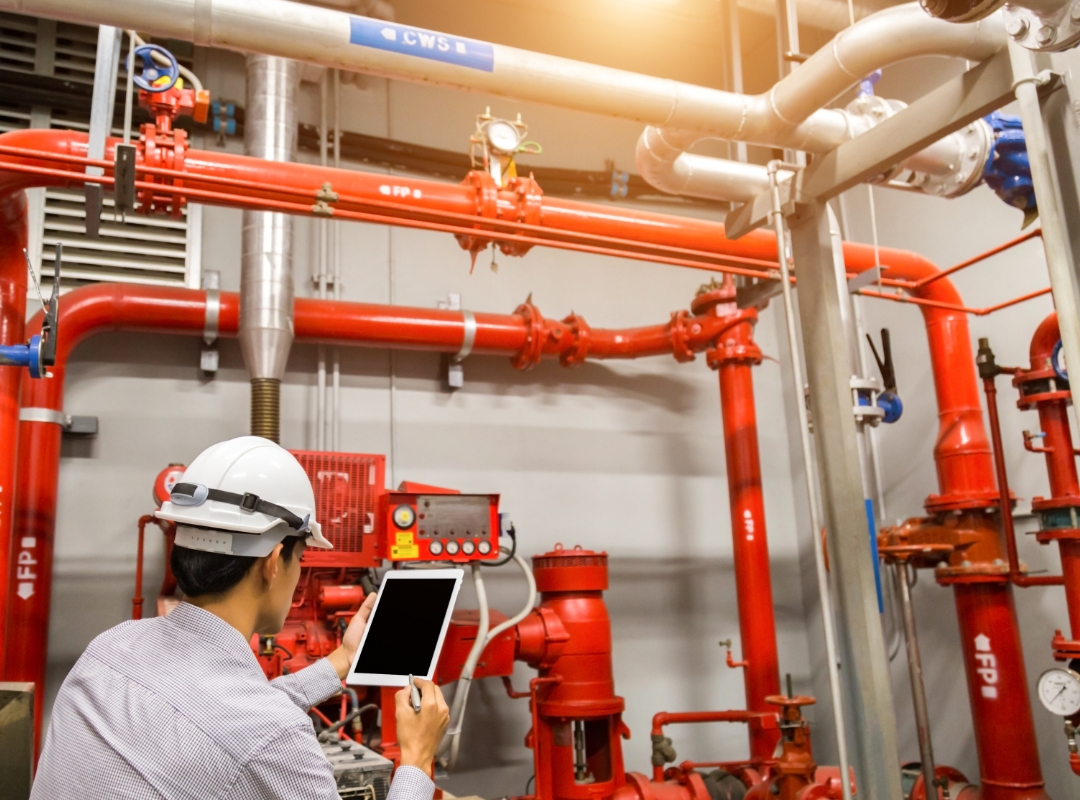
| PERFORMANCE STANDARD | SOURCE |
|---|---|
| Elevate tank for dedicated fire supply to serve the flight line. | DD Form 1391/RD Installation Facilities Standards Const. Zone 35% RTA RFP Packages |
| Water supply system has SCADA monitoring to control water supply tank operations. | DD Form 1391/RD Installation Facilities Standards Const. Zone 35% RTA RFP Packages |
Wastewater

| PERFORMANCE STANDARD | SOURCE |
|---|---|
| Retrofit lift stations to protect against high-velocity winds and storm surge. Lift stations will include automated SCADA monitoring and operating controls. |
Design Wind Speed and Building Envelope Protection Memorandum issued by HQ USAF/A4C (27 Aug 2019) Design Flood Elevation Memorandum issued by HQ USAF/A4C (5 June 2019) DD Form 1391/RD Installation Facilities Standards Const. Zone 35% RTA RFP Packages |
| Provide lift stations with dual pumps and force mains for resiliency and redundancy. | DD Form 1391/RD Installation Facilities Standards Const. Zone 35% RTA RFP Packages |
| Provide lift stations generation or connection capability to backup power generation. | DD Form 1391/RD Installation Facilities Standards Const. Zone 35% RTA RFP Packages |
Stormwater

| PERFORMANCE STANDARD | SOURCE |
|---|---|
| Elevate and protect new facilities against floods and storm surge. | Design Flood Elevation Memorandum issued by HQ USAF/A4C (5 June 2019) DD Form 1391/RD Installation Facilities Standards Const. Zone 35% RTA RFP Packages |
| Use a “treatment train” approach to regional stormwater treatment. | DD Form 1391/RD Installation Facilities Standards Const. Zone 35% RTA RFP Packages |
| Use Nature-Based Infrastructure, such as shallow, vegetated mesic forest basins, over traditional stormwater gray infrastructure. | DD Form 1391/RD Installation Facilities Standards Const. Zone 35% RTA RFP Packages |
| Provide water quality elements to portions of existing facilities that previously did not achieve the standards. | Const. Zone 35% RTA RFP Packages |
Transportation System
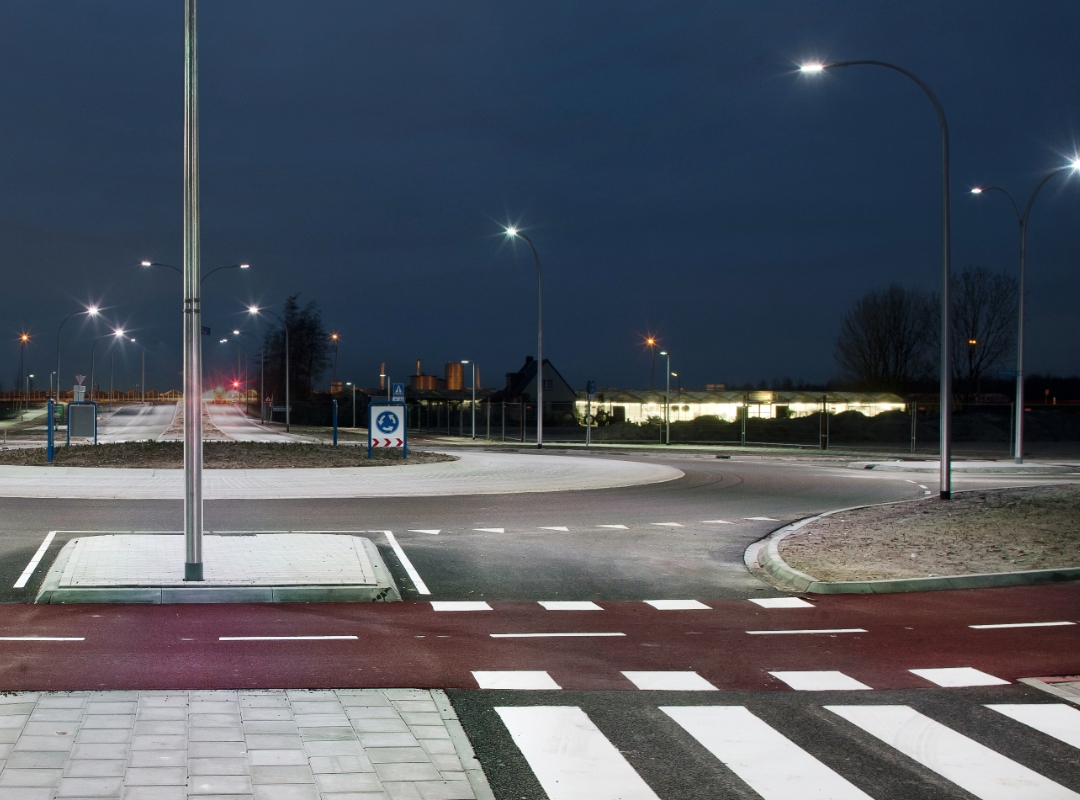
| PERFORMANCE STANDARD | SOURCE |
|---|---|
| Convey stormwater from roadway to drainage system or regional storming facilities through bioswales | UFC for Low Impact Development Installation Facilities Standards Landscape Master Plan DD Form 1391/RD Const. Zone 35% RTA RFP Packages |
| Install pedestrian/bicycle facilities to enable a walkable campus. | Installation Facilities Standards Landscape Master Plan DD Form 1391/RD Const. Zone 35% RTA RFP Packages |
| Build Multi Modal Spine (MMS) to accommodate various modes of transport. | Installation Facilities Standards Landscape Master Plan DD Form 1391/RD Const. Zone 35% RTA RFP Packages |
| Install roundabouts in lieu of traffic signals. | Installation Facilities Standards Landscape Master Plan DD Form 1391/RD Const. Zone 35% RTA RFP Packages |
| Integrate American Association of State Highway and Transportation Officials long-life pavement design. | Installation Facilities Standards Landscape Master Plan DD Form 1391/RD Const. Zone 35% RTA RFP Packages |
| Maximize recycled asphalt and concrete in the construction of the MMS. | Installation Facilities Standards DD Form 1391/RD Const. Zone 35% RTA RFP Packages |
Revegetation and Integrated Land Management
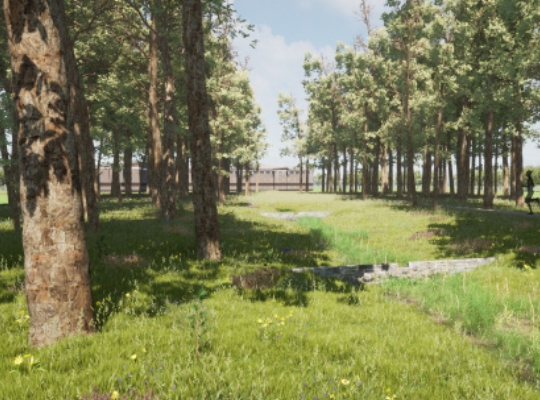
| PERFORMANCE STANDARD | SOURCE |
|---|---|
| Provide streetscape landscaping for reduction on heat island effect. | Installation Facilities Standards Landscape Master Plan DD Form 1391/RD Const. Zone 35% RTA RFP Packages |
| Revegetate common spaces and overall reduction on maintenance base-wide. | Installation Facilities Standards Landscape Master Plan DD Form 1391/RD Const. Zone 35% RTA RFP Packages |
| Install permeable paving in overflow parking spaces. | Installation Facilities Standards Landscape Master Plan DD Form 1391/RD Const. Zone 35% RTA RFP Packages |
| Install bioswales and drainage swales plantings to reduce curb, gutter, inlets, and piping. | Installation Facilities Standards Landscape Master Plan DD Form 1391/RD Const. Zone 35% RTA RFP Packages |
Coastal Resilience
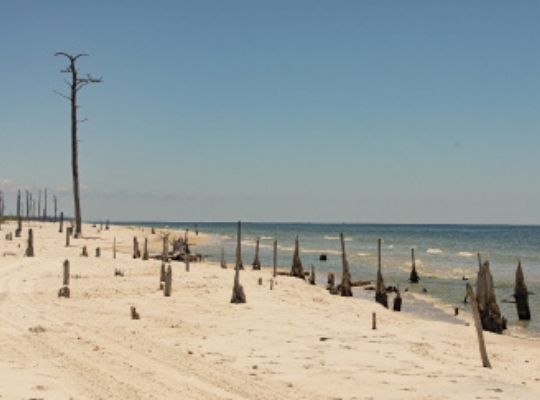
| PERFORMANCE STANDARD | SOURCE |
|---|---|
| Construct nature-based coastal measures (dunes, beaches, sea marshes, maritime forest, shrub communities, and barrier island restoration) to protect shoreline integrity and minimize facility risks, where feasible and cost efficient. | Coastal Resiliency OTA Pilot Project Installation Facilities Standards Landscape Master Plan |
| Create opportunities for innovative hybrid solutions that integrate nature-based and engineered solutions, such as reconstructed wetlands, restored coastal areas, and aquatic ecosystems. | Coastal Resiliency OTA Pilot Project Installation Facilities Standards Landscape Master Plan |
| Establish a coastal resilience adaptive management plan that adjusts to sea level rise. | Coastal Resiliency OTA Pilot Project |

